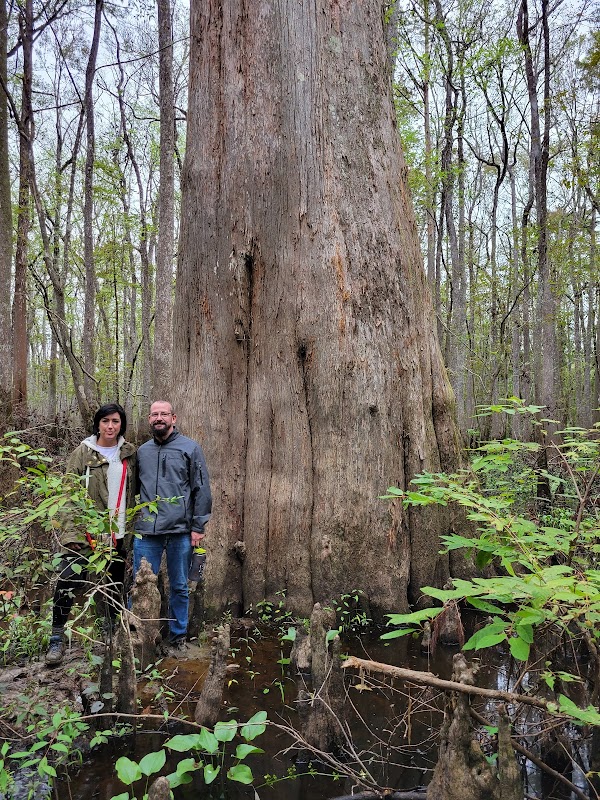
Cypress Knees and Spanish Moss: Hiking the Trails of Clark Creek Natural Area
Explore the unique wetlands of Clark Creek Natural Area, where towering cypress knees and draping Spanish moss create an unforgettable hiking experience. This trail offers both serene natural beauty and practical challenges for hikers eager to connect with one of Mississippi’s wildest landscapes.
Wear Waterproof Hiking Shoes
The trail crosses swampy areas and muddy sections where footing can be unstable. Shoes with good traction and some water resistance will keep you steady.
Bring Ample Water
Humidity and exertion can drain your energy quickly. Plan for at least two liters of water per person to stay hydrated throughout the hike.
Start Early or Late in the Day
Midday heat can be intense during warmer months. Early morning or late afternoon hikes offer cooler temps and softer light for photography.
Use Insect Repellent
Mosquitoes and biting insects are common in the wetlands, especially in summer. A reliable insect repellent improves comfort and reduces risk of bites.
Cypress Knees and Spanish Moss: Hiking the Trails of Clark Creek Natural Area
Clark Creek Natural Area invites hikers to step into a landscape where nature asserts itself in shapes and shades rarely encountered elsewhere. The trail stretches roughly 4.5 miles round trip with modest elevation gains under 200 feet, winding through wetlands where cypress knees rise like silent sentinels, and Spanish moss drapes across ancient limbs like living curtains swaying in a slow breeze.
Each step on the soft, often muddy soil challenges you to engage fully — the terrain is a mix of packed dirt, wooden boardwalks, and occasional roots to navigate carefully. The cypress knees push upward stubbornly, daring hikers to respect their space as you pass under branches weighed down by hanging moss, alive with the flutter of small birds. The forest is fiercely itself here—wild but accessible.
Start early to avoid midday heat and capitalize on the soft, diffuse morning light draping the forest. Good, waterproof shoes are a must; trails can become slick from swamp overflow. Carry at least two liters of water, as shaded though the paths may be, humidity and exertion add up. A compact insect repellent is handy during warmer months.
The trail culminates in views across Black River wetlands where quiet currents dissect the greenery below. It’s a place to pause, catch your breath, and observe the slow-moving dance of moss, water, and knee-like roots that seem to pulse with the life of the swamp itself. Whether you’re a casual day hiker or a seasoned trekker looking to add a unique environment to your experience, Clark Creek delivers an adventure grounded in both the rawness and poetry of nature.
Plan your visit in late spring or early fall when conditions are ideal—neither blistering hot nor soggy. Know that while it’s not a technical trail, the slippery mud and unyielding roots demand attentiveness and steady footing. Hiking here isn’t about conquering but joining in a dialogue with a wild place intensely alive in its own rhythm.
Nearby Trips
All Adventures
Boat Charters
Water Activities
Adventures near Hattiesburg, Mississippi
Discover the unique and memorable adventures that make Hattiesburg, Mississippi special.
Frequently Asked Questions
How long is the hike at Clark Creek Natural Area?
The primary trail is approximately 4.5 miles round trip, typically requiring 2 to 3 hours for an average hiker.
Are there elevation changes on the trail?
Elevation gain is minimal, less than 200 feet, but the terrain includes uneven and sometimes slippery surfaces that require careful navigation.
Is the trail suitable for families with children?
Yes, but children should be supervised closely near wet areas and slippery roots. The trail’s moderate difficulty is manageable for older children used to hiking.
What wildlife might I see along the trail?
Expect to see birds like woodpeckers and warblers, occasional turtles, and possibly river otters or beavers near water. Insects are common, especially mosquitoes in warmer months.
When is the best time to visit to avoid crowds and insects?
Early spring and fall offer cooler temperatures, fewer insects, and less crowded trails. Early mornings in summer also provide some respite from heat and bugs.
Are pets allowed on the trails?
Pets are allowed but should be kept on a leash. Be mindful of wildlife and bring waste bags, as wetlands are sensitive ecosystems.
Recommended Gear
Water-Resistant Hiking Shoes
Keeps feet dry through wet or muddy patches and provides grip on slick roots and boardwalks.
Hydration Pack or Water Bottles
Ensures you stay hydrated, particularly important in the humid environment of the wetlands.
Insect Repellent
Protects against mosquitoes and biting insects, especially vital in warmer months.
Lightweight Rain Jacket
Useful for sudden showers or damp conditions common near wetlands during transitional seasons.
Local Insights
Hidden Gems
- "A small overlook near the trail’s midpoint provides a rarely noticed, elevated view over the tangled wetlands."
- "Look for subtle clusters of rare orchids growing in shaded areas during spring."
Wildlife
- "Watch for secretive river otters that occasionally swim through the Black River tributaries."
- "Listen for the tapping of pileated woodpeckers, a dominant presence in these mature wetland forests."
History
"Clark Creek Natural Area preserves a section of old-growth cypress forest significant to the region’s ecosystem, once logging ground with rich cultural importance for local communities relying on these waterways."
